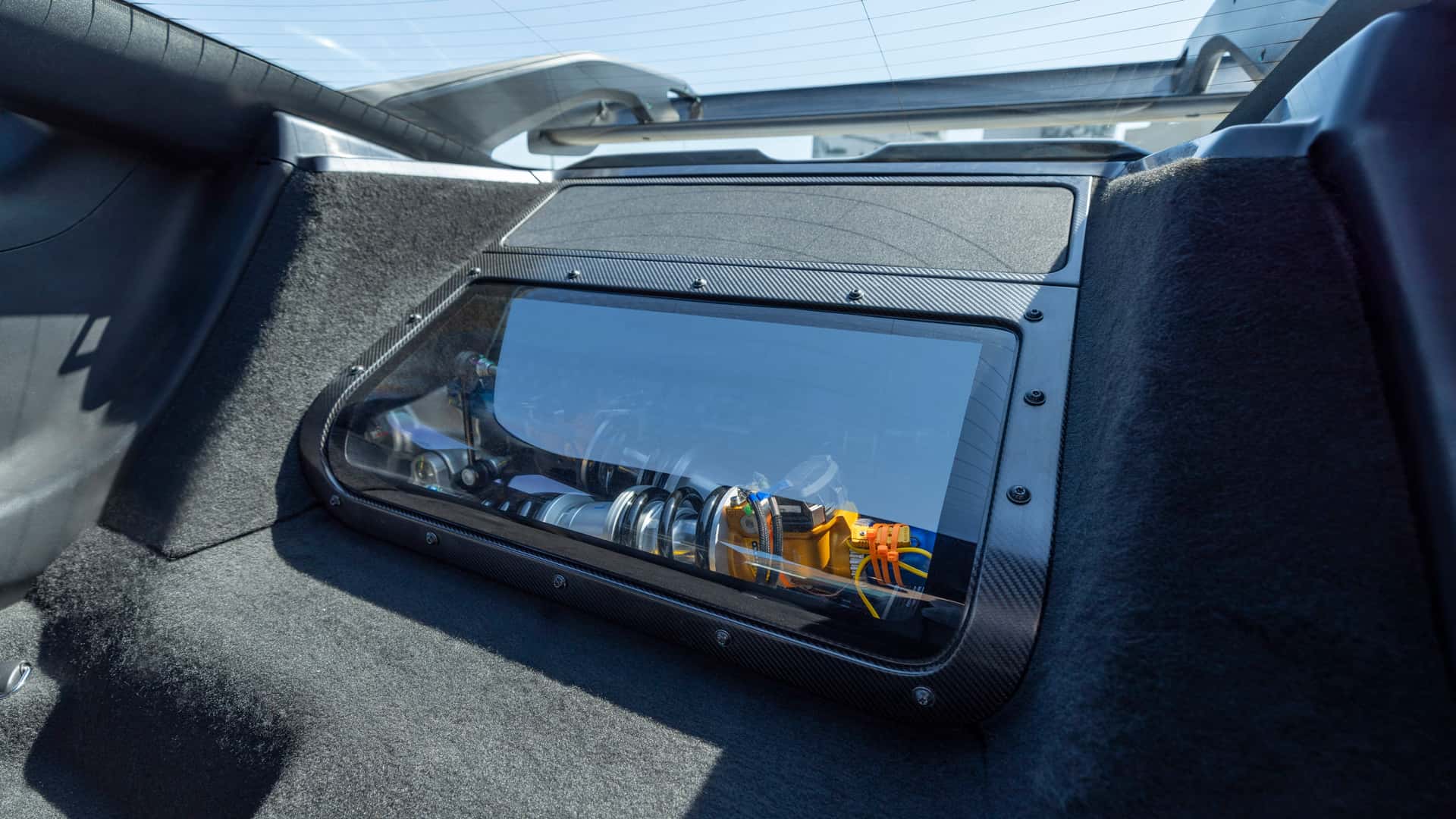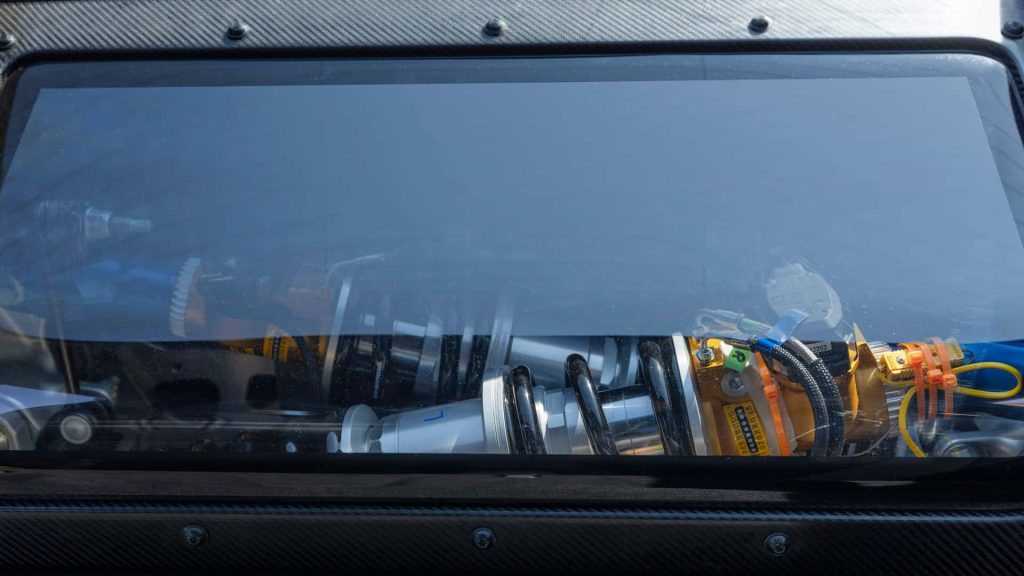Ford shines a spotlight on the Mustang GTD’s suspension system. Confirms that owners will get a view of the action thanks to an interior-mounted viewing window.
The Ford Mustang GTD is shaping up to be one of the wildest Mustang models that the company has ever created. The GTD encouraged Mustang engineers to break boundaries and push the performance envelope to create a unique track-ready offering that can still be registered for street use.
However, the GTD is a complex performance machine and while the fire-breathing mid-mounted V8 is a crucial part of the puzzle, there are other systems that all do their part to help the GTD close the show. That includes its race-engineered suspension with Ford shedding more light on that aspect of the car in its newest release.
Suspension provides occupants with view of the action
When Ford unveiled the Mustang GTD, the company shined a spotlight on the suspension with the rear suspension in particular getting the bulk of the company’s praise. Unlike other Mustang models, the rear suspension is a semi-inboard active pushrod setup that was originally developed for the Mustang GT3 race car. The novel suspension sharpens the car’s handling and Ford is so proud of this setup that it will be giving customers a view of the action via a small viewing window mounted in the cabin.
The two-foot wide window is housed in the back where the rear seats would be in a normal Mustang with the polycarbonate panel allowing owners to not only see the dampers but the massive springs as well. The GTD is one of the first production vehicles to give customers this kind of view and look for that to be a potent conversation starter if you ever get a chance to go for a ride in one. The setup uses two springs per damper to help provide a smooth ride.
However, when it’s time to take the car out on the track, switching it to track mode will cause one of the springs to compress. That doubles the spring rate while also lowering the ride height slightly to improve grip and high-speed handling behavior.
“We’ve never done a suspension like this on Mustang,” said Mustang GTD Chief Program Engineer Greg Goodall. “To meet the aggressive lap time targets we set, we looked to motorsports for that inspiration to do something really advanced. This cutting-edge suspension and advanced dampers are key to turning a Mustang into a Mustang GTD.”
More Mustang Stories
- Ford CEO Doesn’t Rule Out Mustang Sedan in Interview, Hybrid Still In Play Too
- Ford Begins Taking Applications For Mustang GTD, Other Markets Get Their Chance In June
- Ford Celebrates Mustang’s 60th Birthday With New Anniversary Edition, Limited to 1,965 Units
V8 engine helps bring it all together
While the GTD’s suspension allows it to dance like a race car, it wouldn’t mean much if the GTD had a pea-shooter for an engine. Thankfully, Ford engineers were ahead of the curve and gave the GTD a mid-mounted supercharged V8 engine. Ford is still not ready to disclose how much power the engine is producing, but the company has said in the past it estimates the bespoke engine to produce over 800 horsepower with the power being delivered through a rear-mounted transaxle.
Ford is also preparing to take the GTD to the fabled Nurburgring race track for rigorous track testing. The company revealed that it’s targeting a lap time of under 7 minutes and if the V8-powered Mustang is successful in breaking that barrier, it would surpass the Dodge Viper ACR’s lap time. The axed serpent managed to achieve a lap time of 7:01.23 on the circuit and the front-mounted V10 in that car was pushed to its limits on the 12.9-mile course.
A limited-time only
Ford is currently taking orders for the Mustang GTD from interested buyers but it’s doing so at a slow and calculated pace with some markets being forced to wait their turn before customers in those regions can place an order. Ford is also planning a two-year production run for the GTD with the company only building a few hundred of them each year.
Look for that to possibly change as things proceed with the company already logging over 7,500 applications from buyers looking to purchase one. This popularity has also played a role in changing Ford’s mind in the past, with the company altering production plans for the Ford GT supercar after recording higher-than-expected consumer demand.










0 Comments